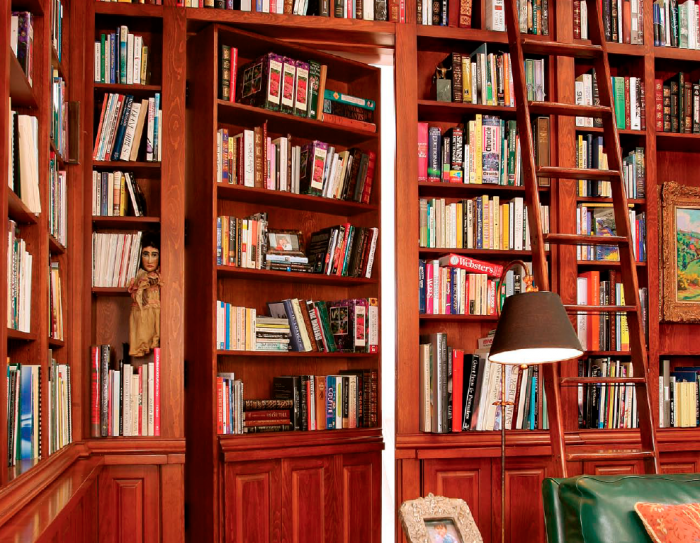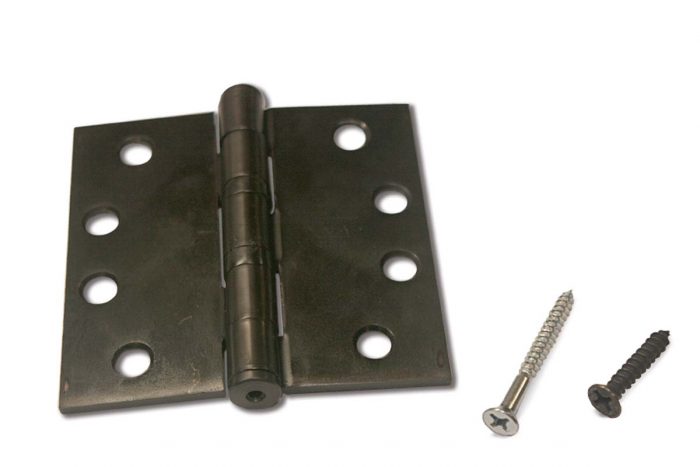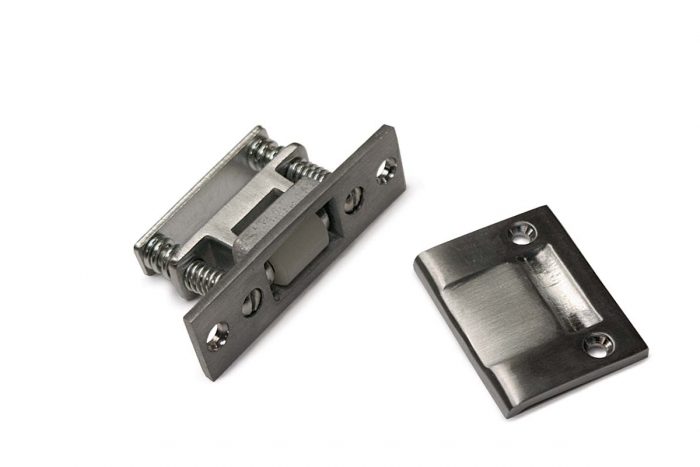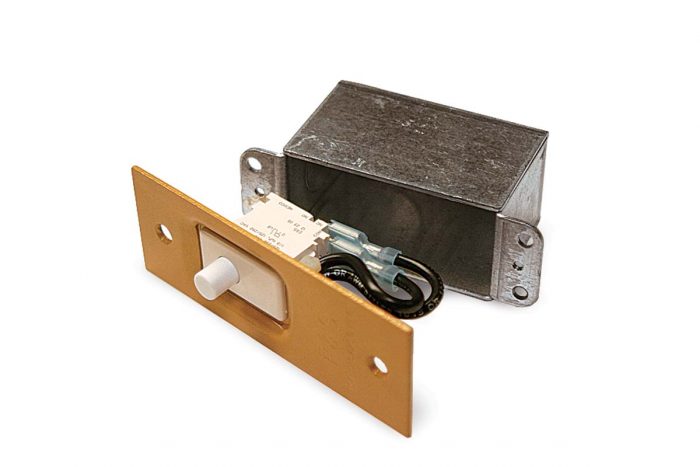The Secrets Behind Hidden Doors
Trim placement and special hardware make possible the tight tolerances that eliminate telltale gaps.

Synopsis: Hidden doors pop up in mystery novels as a place for a shadowy figure to make a quick getaway. You don’t need to be a shadowy figure, though, to take advantage of a hidden doorway in your home. Maybe you’d like to have a small wine closet, or a secret place to store valuables. Albuquerque cabinetmaker Joel Wheeler draws on his 30 years of experience to offer his thoughts on the best way to build a hidden doorway. Wheeler’s projects involve bookcase doorways, which blend easily into library walls. Using the right heavy-duty hardware, making room for an oversize rough opening, and attaching the doorway properly to the wall framing are keys to a masterful hidden doorway.
There is a universal admiration for clever carpenters who transform cabinet space into a secret spot for jewelry, old love letters, cameras, or cash. The secret spot becomes magical, though, when a bookcase swings silently away and a person walks through. Achieving this architectural subterfuge calls for a combination of clever design and meticulous execution.
I work in a shop with a close-knit group of woodworkers. Over the years, we have collaborated on many projects, including hidden doorways that are whimsical, entertaining, and sometimes serious. With each project, we incrementally have improved structural details, smoothed operation, and more convincingly camouflaged the door.
When we plan hidden doors, we like to put them into a cabinet rather than wall paneling because the gap under the door is less noticeable hidden under a toe kick. The hardware and planning issues, though, can be applied to doors hidden in wall paneling or wainscot.
The Design Evolved Through Many Iterations
Our first full-size hidden-bookcase door was a great learning experience. We used a face frame on the door, and we incorporated a few adjustable shelves, thinking they would help with the disguise. Turned out that they hindered: The door sagged when open, even with four door hinges. We had to incorporate a caster as an aid. And because the floor was both uneven and out of level, it had to be a spring-assisted caster. Wow, was it ugly! For our second door, we switched to ball-bearing hinges, fully fixed shelves, and a 3⁄4-in. back. No more ugly casters for us. (Another problem with casters is that they mar the floor, leaving a telltale mark.)
Our latest hidden door is virtually undetectable and a good example of the tolerances we strive for. Several years after completion, the door sagged slightly and dragged on the floor. We fixed this with a manila-folder shim behind the bottom hinge, subterfuge intact.
To get the best results, design both the door and its adjoining room together before the room is built. Retrofitting is possible, but the details are much easier to work out ahead of time on paper.
Bookcase Doors Are Like Heavy Regular Doors
A hidden bookcase door is still a door. It must open and close with ease, and it must allow easy access and egress. When closed, the door should have no rattle or give. The strike side of the jamb needs the equivalent of a regular door’s beveled edge to give clearance when the door is opened.
The main difference is that the hidden door must not reveal itself. It should open to keep the hinges concealed, and it should mimic all details of the other cabinets exactly. It also requires the tolerances of furniture-making (± 1⁄32 in.). With tolerances this tight, there’s no room for settling or a slightly sagging door, so hinge choice is crucial.
You can use either face-frame or European-style cabinets as the door. We’ve found that it’s more effective to place a European-style (frameless) door cabinet behind wide face-frame members common to the surrounding cabinetry. To strengthen the door cabinet, we use a 3⁄4-in.-thick plywood back that is glued, screwed, and rabbeted to the cabinet sides. The stationary face frame acts as a doorstop and hides the 1⁄8-in. gap between the door and the bookcase. To hide the vertical gaps in the toe kick, these face-frame members go to the floor. Staining bookcases dark is another way to hide small gaps.
Mimic details of the cabinetry that the door will be housed in. If the floor is out of level and you must leave clearance at the bottom of the door’s toe kick, leave the same clearance at the other toe kicks in the stationary cabinetry. It may not be pretty, but the work will appear the same and won’t draw attention to the hidden door.
If surrounding cabinets have adjustable shelves, drill holes for them in the hidden door, and glue shelf clips below the stationary shelves. If the stationary bookcase is screwed to the wall, use false screw covers spaced 16 in. or 24 in. apart on the back of the hidden door to match.
Door Location Affects Operation
The extra depth of a bookcase door versus a regular door means that the door must be able to swing substantially out of the way to yield an opening big enough to use. If the door is 10 in. deep, it will encroach slightly more than 10 in. into the opening until it has swung nearly all the way open. To allow for this greater amount of swing, the door should be placed in one of the center cabinets rather than at one end. This placement also allows room for extra-beefy jamb blocking so that longer-than-standard screws can anchor the hinges.
A door at the end of the cabinetry needs to be wide enough so that even with its depth, it allows the passage of the homeowner. Also, if the door is in an end section of bookcase, there will be nowhere for the extralong screws to penetrate unless you engineer some backing into the cabinet. You can do this with an extrawide side, which might give away your secret, but it’s better to keep everything tucked behind the face frame. You also can set the bookcase into the wall framing so that the hinge screws can penetrate the wall framing.
Hardware Is The Key To Smooth, Durable Operation
Hinges are the most important hardware. I’ve found premium-quality ball-bearing hinges (we use four per door) to be the best choice for a number of reasons. Knuckle hinges, which allow an outward swing, are problematic at best because they are not strong enough to support the weight of a cabinet with books (250 lb. or more). Even heavy-duty door hinges wear down over the years, resulting in a dragging door. Other concealed hinges, such as cup hinges for cabinet doors, simply aren’t strong enough; or if a significant number were used, the project would require too much fiddling to make it worth skipping the ball-bearing hinges.
A few other pieces of hardware also are important. A heavy-duty roller catch keeps the door stationary even if someone leans against the cabinet. The catch works best if it forces the door tightly against the back of the face frame. If you discover a small give or rattle after
installing the catch, put cabinet-door bumpers on the back of the face frame. These resilient bumpers are available in many different thicknesses to provide the necessary cushion. A door-jamb light switch automatically turns on the light in the secret room when the door is opened and off when the door is closed. This is a good idea because a light inadvertently left on would shine under the slight gap below the toe kick. If the secret room is a wine cellar, automatically shutting off the light will keep the wine from getting too warm or the refrigeration unit from being overworked. All this hardware is available at many hardware stores or online (www.designerhardware.com).
Hidden doors are challenging projects that require careful planning and excellent execution. But the hardest part is actually keeping the secret.
Heavy-Duty Hardware Keeps The Secret
A dragging door would be a dead giveaway. Standard butt hinges wear down over time, causing the door to sag or drag. Ball-bearing hinges ($24 a pair) keep heavy doors swinging silently for a long time. Use 2-in. screws to mount the hinges. There’s no need to look for 2-in. screws that match the hinge finish; just paint the heads to match.
The door must not open accidentally. Standard bullet catches aren’t strong enough; what if a guest leans against your bookcase? A heavy-duty roller catch ($21) holds the door shut until you push it open.
A sliver of light under the toe kick would sabotage the subterfuge. A door-jamb light switch turns on the light when the door is opened and off when the door is closed. If you plan to stay in your secret room with the door closed, go to plan B: a light switch controlled by a motion sensor or a timer.
For more photos, illustrations, and details, click the View PDF button below:









